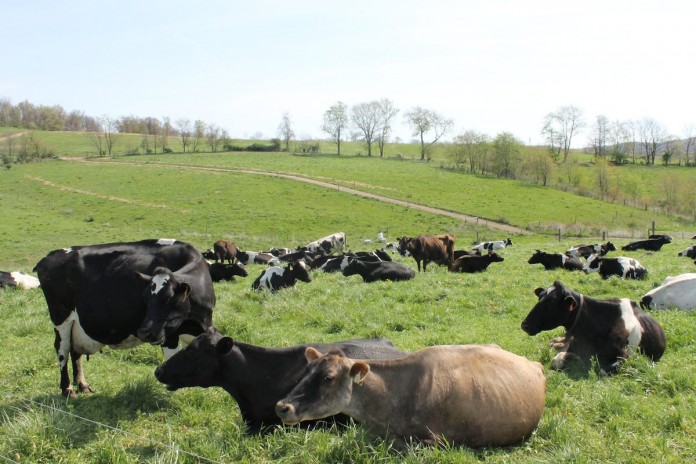You were probably relieved to hear that Congress and the President worked together to pass a 12-hour extension of Section 179 expensing to help manage your income tax liability for 2014.
For many dairy farmers, this extension will help as long as it is applied through needed purchases rather than “wants” that may not improve long-term profitability.
A better way to monitor how well the farm business is performing is through annual analysis and then benchmarking your farm’s performance against peer farms as well as the best in the industry.
2013 numbers
While we are gearing up for 2014’s analysis, let’s take a look back at the analysis completed for 2013.
Thirty-five Ohio dairy farms completed a whole farm analysis for 2013, and also evaluated their dairy enterprise and each crop enterprise on their farm.
This is an excellent investment of valuable time resources that allows them to identify strengths and areas for improvement across their farm.
Management matters
While the net return for all farms averaged $544 per cow, there was a tremendous (and typical) range, from farms losing up to $500+ dollars per cow, to farms netting more than $2,000 per cow.
The top 20 percent of farms are sorted by net return per cow, and this group of farms averaged nearly $1,000 more per cow than the average of all farms.
While the net return for all farms averaged $544 per cow, there was a tremendous (and typical) range, from farms losing up to $500+ dollars per cow, to farms netting more than $2,000 per cow.
Each year, the summary has clearly shown that it doesn’t pay to be average in the dairy industry. Shoot for the upper third of dairy farms.
Your operation
How do you know where you are? In the farm office, bookkeeping has to go beyond what is needed for the tax preparer.
Some bookkeeping programs go beyond the basics and allow the operator to generate income statements, balance sheets and cash flow statements. These are integral parts of a year-end analysis. However, unless the accountant or bookkeeper is enterprising information, it is difficult to accurately pinpoint how individual enterprises contribute to the bottom line.
The bookkeeper is not the only critical piece in this puzzle. The guys outside have to keep good production records as well.
When these two pieces are integrated into a final analysis, the result is a wealth of information for making sound business decisions.
Get started
If your current system does not allow this sort of analysis, 2014/2015 is a prime time to join the Ohio Farm Business and Benchmarking program.
There are two ways to participate depending on what records and information you kept in 2014:
1) “I have good financial and production records and balance sheets.”
In this case you are ready to jump in with an analysis of 2014. You will receive your complete analysis as well as benchmark reports personalized to show your farms’ performance compared to the other Ohio farms.
2) “I don’t have balance sheet information, and I’m not sure I can say how much seed, fertilizer and other crop input costs should go to each of the crops I raise. I just enter the amount I paid to the co-op. But I really want to start getting cost of production numbers for my farm.”
In this case, going back and trying to figure out the details for 2014 could cause a mild to severe migraine! However, you are not alone. Because this is fairly common, we secured a risk-management grant that allows us to mentor up to 21 farms through 2015.
We will work with each farm to develop balance sheets (learning what they are and how to use them in your business), review record-keeping systems to make sure that needed information is captured during the year, and ending 2015 with the second balance sheet and an analysis of 2015’s business.
Not only will you end up with quality numbers to use in management of the farm, but each farm will be set to continue analysis in the following years. Cost is minimal due to current generous grant funding, at only $100 per farm for either method discussed above.
The table above shares a few basic numbers from the analysis. Visit http://farmprofitability.osu.edu to view past analyses and find out more about Ohio’s program.
Contact us to talk about what would work well for your farm, 330-533-5538 or shoemaker.3@osu.edu.












Well said (imho), Dr Dianne Shoemaker.